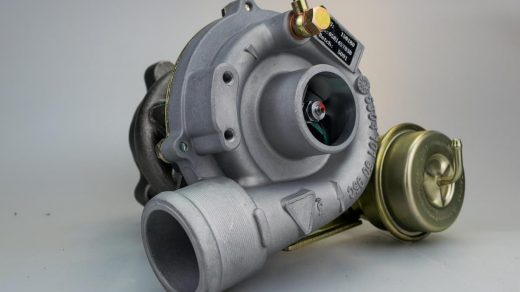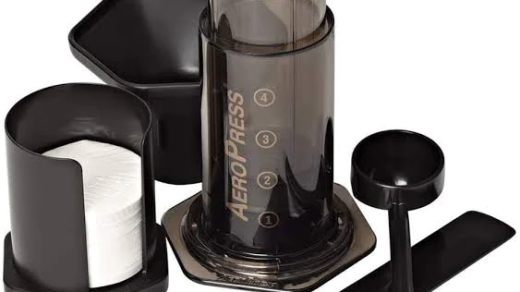In the relentless battle against the corrosive nemesis that is rust, fleet owners often find themselves in pursuit of effective repair strategies to combat this tenacious foe. Whether you have just a few commercial vehicles or quite a big fleet, minimizing downtime is essential both cases. In this comprehensive guide, we’ll delve into innovative methods and test new features emerging in the field of rust repair. Buckle up as we explore the latest approaches and terms that go beyond the traditional playbook, ensuring your fleet stands strong against the onslaught of corrosion.
One intriguing avenue for acquiring new insights into rust repair lies in the vast realm of online tutorials, particularly on platforms like YouTube. With countless experts sharing their experiences and demonstrating techniques, YouTube works as an invaluable resource for anyone looking to test new features in the battle against rust. But that’s not something business owners have time for. That’s why many apply for full-service truck repair in California and surrounding areas.
Understanding the Anatomy of Rust: Identifying Early Warning Signs
Understanding the anatomy of rust is essential if you want your fleet serve longer. Identifying early warning signs is the initial step in the proactive maintenance of your fleet’s exterior. Rust often starts in inconspicuous areas, such as small chips or scratches in the paint. These seemingly minor imperfections create vulnerable entry points for moisture and oxygen to initiate the oxidation process on the underlying metal. By scrutinizing these areas and recognizing the initial discoloration or bubbling, fleet owners can intervene early and prevent the spread of corrosion before it becomes a costly issue. This section will guide you through the nuanced early signs of rust, empowering you to take proactive measures to safeguard your vehicle against the relentless forces of corrosion.
Step 1: Preliminary Visual Inspection – Where to Begin
In the realm of commercial fleets, where the reliability and efficiency of vehicles are essential, a visual inspection is a must. Fleet managers and operators should commence this crucial assessment by examining the external surfaces of each vehicle, paying particular attention to areas prone to rust formation, such as wheel wells, undercarriages, and exposed metal components. During this visual sweep, any signs of bubbling, discoloration, or surface irregularities should be noted and thoroughly documented.
Check high-risk zones like joints, seams, and hinges ensures. Those are potential rust hotspots where basic preventive measures can help a lot. The visual inspection not only safeguards the fleet’s visual aesthetics but also lays the groundwork for a strategic rust management plan that aims to minimize downtime, enhance vehicle longevity, and uphold the operational reliability of the entire commercial fleet. Do remember, that you cannot repair rust if you simply wipe the area that you think starts damaging.
Step 2: Assessing Structural Integrity and Rust Severity
Once the visual inspection has been completed in the context of a commercial fleet, the focus shifts to Step 2: assessing the structural integrity and gauging the severity of rust. Fleet managers must delve deeper, employing a comprehensive evaluation of critical structural components such as frames, chassis, and load-bearing elements. Using advanced diagnostic tools can help in measuring the thickness of metal surfaces, identifying any compromising corrosion beneath seemingly unaffected areas.
Evaluating the extent of rust severity is crucial for making informed decisions about the necessity of repairs or replacements, ensuring that the fleet’s structural integrity is maintained at optimal levels. This section guides fleet operators through the nuanced process of structural assessment, emphasizing the importance of early detection to prevent potential safety hazards, operational disruptions, and costly repairs down the line.
Step 3: Probing and Testing – Tools and Techniques for Thorough Examination
In the commercial fleet landscape, where the operational reliability of vehicles is crucial, Step 3 involves probing and testing using specialized tools and techniques for a thorough examination of potential rust damage.
In the arsenal of tools used for rust damage inspection and repair in the commercial fleet sector, precision and efficacy are things every manager is looking for. Advanced diagnostic instruments such as borescopes, moisture meters, and ultrasound devices play a pivotal role in uncovering hidden corrosion and assessing the depth of rust penetration within structural components:
- Borescopes, equipped with miniature cameras, allow fleet managers to inspect inaccessible areas, capturing high-resolution images that reveal the extent of rust damage.
- Moisture meters aid in identifying areas prone to rust formation by detecting elevated levels of moisture, a key catalyst for oxidation.
- Ultrasound devices facilitate the measurement of metal thickness, helping gauge the severity of rust and determine the appropriate course of action.
This technologically-driven approach not only enhances the accuracy of rust inspections but also empowers fleet professionals to implement targeted and effective repair strategies, ensuring the longevity and operational resilience of the commercial fleet.
Interpreting Results: What Your Assessment Reveals and Next Steps
Interpreting the results of a thorough rust assessment in the context of a commercial fleet is a critical juncture that dictates the subsequent steps for fleet managers. The findings from the inspection, encompassing visual assessments, structural evaluations, and diagnostic tests, collectively unveil the state of the fleet’s resistance to corrosion. If the assessment identifies early signs of rust, fleet managers can strategize preventive measures, including surface treatments, coatings, and targeted repairs. However, in cases where structural integrity is compromised or extensive rust damage is uncovered, more intensive interventions such as welding repairs or part replacements may be imperative to ensure the continued safety and reliability of the fleet.
The next steps following the interpretation of assessment results hinge on developing a comprehensive rust management plan tailored to the specific needs of the commercial fleet. This plan may include a schedule for routine inspections, the implementation of preventive measures, and a strategy for addressing identified issues promptly. Fleet managers must also factor in budget considerations, prioritizing interventions based on the severity of rust damage and the criticality of affected components to overall fleet performance. By understanding and interpreting the assessment results, fleet professionals can formulate a proactive and sustainable approach to rust management, safeguarding the fleet’s longevity, minimizing downtime, and preserving operational efficiency.




Recent Comments